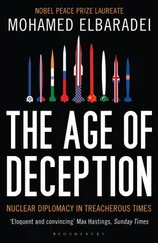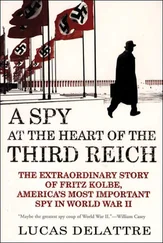Technology and the internet create problems for old-style illegals too. Spycatchers in Britain used to wonder why Soviet block embassy staff showed such interest in cemeteries and country churchyards. Eventually the penny dropped: they were looking for the gravestones of dead children, in order to obtain their birth certificates and then apply for passports, driving licences etc. But the scope for this is shrinking. Biometric data are unique to each individual. Birth and death registries are increasingly computerised. Google makes tracing connections easier. In Heathfield’s case, a news announcement in the Canadian press in 2005 of the death of his ‘father’, Howard William Heathfield, also mentioned that the real infant Donald had predeceased him. Had the phoney ‘Donald’ already been under suspicion, the death notice could have given a dangerous clue to an alert spycatcher.
Fashioning a fake identity that fools a layman is one thing. Creating one that generates a real passport and other documents is harder. But providing an alias that will withstand determined scrutiny – for example of the kind carried out on an applicant for a security clearance – is now formidably difficult. The slightest anomaly or flaw becomes fatal. For this reason, the best penetration agents are not illegals but traitors: people like Kim Philby, a blue-blooded trueborn Englishman who decided at university to devote his life to the communist cause, and simply waited until SIS hired him. 31Herman Simm was at least in his own eyes in the same category. But traitors cannot be ordered up at will. Instead, Russia’s spymasters are turning to a new and more potent category of illegal. Unlike Heathfield and his colleagues, they do not rely on stolen identities. They use their own.
The clearest traces of this new echelon of Russian spies (one might call them the ‘legal illegals’) were left by Ms Chapman and the rather less glamorous (but more impressive) Mikhail Semenko, a fluent Mandarin speaker who worked at a travel agency but hung around Washington think tanks. Like Heathfield, Semenko maintained a profile on the business networking site LinkedIn. 1This gives his genuine Russian academic credentials, from Amur State University and the Harbin Institute of Technology in China, as well as his American alma mater, Seton Hall. It describes him, in convincing resumé-speak, as a:
highly creative and analytical professional with recent education and diverse experience involving development assistance, meeting and event planning, partnership building, and high-level client relations. Natural leader and communicator with in-depth knowledge of government policy research, program management, international negotiations, and delivery of formal public speaking presentations.
Solid history of success creating new public policy events, expanding program participation and membership, and establishing connections between diverse cultures. Multilingual with native expertise in Russian, fluency in English, Mandarin Chinese, and Spanish, and intermediate skills in German and Portuguese.
It lists his interests in ‘non-profits, think tanks, public policy, advocacy and educational institutions’ and his specialities as: ‘International Relations, Foreign Policy Analysis; Program and Project Management; Policy Research and Writing; Senior Executive Council Coordination; Marketing and Sales Management; Membership Recruitment Initiatives; Client and Public Relations.’ Like Heathfield, Semenko constructed a suitable web presence, marketing his expertise with an enjoyable and interesting blog on the Chinese economy. In mid 2011 it was still available at chinaeconomytoday.wordpress.com. It describes him as ‘an expert in Chinese economic policy’ with fluent Mandarin and ‘Rusian’ [sic], available for translation and consulting. The last blog entry, on 24 June 2010 (just before the spy scandal broke) was a thoughtful piece about the undervaluation of the Chinese currency. Two days earlier, an interesting posting dealt with Chinese business manners; before that came a witty piece about the mangled ‘Chinglish’ of confident but inexpert Chinese English-speakers. Semenko matched Heathfield in audacity, but lagged behind him in other respects. Whereas Heathfield, two decades his senior, hobnobbed with the big beasts of American business and government, Semenko moved in a lower orbit, impressing people with his youthful eagerness rather than his expertise. But even in the wonkish world of Washington, people who speak both Russian and Mandarin fluently are thin on the ground. Semenko’s mission, according to a decrypted message from his bosses in Moscow, was to ‘search and develop ties in policymaking circles’. 2That would have presumably meant gaining a job in a think tank and then perhaps in government, where he could have worked as a passive or even an active asset. At some point he, like many other foreigners working in America, would have swapped his H1B visa (issued to highly qualified foreign workers) for a Green Card and then American citizenship. That creates an important line of defence for a spymaster. A detailed background check would have exposed Heathfield as a fraud. He had stolen a dead baby’s birth certificate. But a similar check on Semenko, whether or not he eventually became a US citizen, would have produced nothing incriminating. His account of himself was not untrue. It was just not the whole truth.
Semenko was recruited at university and trained during gaps in his academic career. Had he grown up in a country where co-workers and fellow-students could be quizzed, and foreign travel records scrutinised, he would have been left dangerously open to discovery. A Finnish, Indian or Brazilian student would find it hard to explain or conceal frequent trips to Russia. But it is all but impossible to check out the credentials of someone like Semenko, who divided his time between his native Russia and China. If such a Russian says he spent a summer at a relative’s dacha when in fact he was at spy school, how will the bureaucrat ticking the boxes on his American security clearance spot it? Had Semenko become an American citizen, discriminating against him on grounds of origin would have been offensive and possibly illegal. Only a Western penetration agent inside Russia’s own security and intelligence apparatus would have been able to uncover him. As we will see, that seems to have been the case – on this occasion.
But even Semenko’s entry-level spying activities are worth analysing. Among the think tanks he targeted was the American Foreign Policy Council. 3This is a small, hawkish outfit, which has a long (and in my view admirable) record of contradicting the consensus among Washington-based Russia-watchers. One of its Russia experts until recently was J. Michael Waller, a proponent of the theory that the former KGB retained influence in Russia after the Soviet collapse, and returned to power with Mr Putin in 1999. 4Another is Ilan Berman, an expert on Russian links with Iran and the Muslim world, and a consultant to both the CIA and the Pentagon. Keeping an eye on those in America who truly understand Russia may be more valuable than more overt Kremlin activities (discussed in previous chapters) such as peddling propaganda that all is well, and soft-soaping those who believe it.
On 26 June an undercover FBI agent made contact with Semenko, pretending to be a Russian intelligence officer. The exchange (initially in Russian) went: ‘Could we have met in Beijing in 2004’ to which Semenko replied: ‘Yes we might have but I believe it was in Harbin’. This was no casual chat: the FBI agent was using a codeword to establish his credentials. Semenko’s response showed that he had accepted the American’s bona fides. The FBI agent then asserted that the most recent data swap on 5 June between Semenko’s laptop and that of a Russian official had failed. He admonished Semenko to take more care of the ‘sensitive’ equipment. Semenko then accepted a package containing $5,000, which the FBI agent told him to take to a dead drop at a park in Arlington the next day. He did so and was arrested shortly afterwards.
Читать дальше












